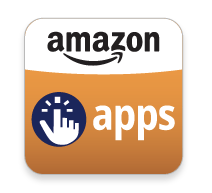At just a year of age, Amazon’s app store is a relative newcomer against both Google Play and Apple’s app store. Yet given Amazon’s prowess in e-commerce plus the Seattle-based company’s willingness to aggressively court top-tier mobile developers, the store has certainly made itself noticed in the app ecosystem.
We caught up with Aaron Rubenson, who has overseen the app store over the last two years as a director, to see how it’s evolved over the past year. So first off, Amazon is notoriously private about any of its sales figures, so there are no numbers on total downloads beyond “hundreds of millions” and there no stats on the active installed base of Kindle owners either.
What does exist are stats from third-party metrics companies like Flurry and bigger developers like TinyCo, which suggest that customers in Amazon’s store monetize at least three times better than Google Play consumers do. Do keep in mind, however, that Amazon only recently opened its store internationally to five foreign markets, so the stats are reflective of an audience that is primarily in the U.S. Google Play, in contrast, offers free applications in about 80 countries, so that covers many less lucrative emerging markets, which would drag down the overall ARPU or average-revenue-per-user figure.
So developers are, to some extent, flying blind in terms of understanding Amazon appstore’s total reach. They’re betting that Amazon’s long, long-term focus will eventually bring the company the marketshare it needs in the tablet (and maybe smartphone) markets to be a financially meaningful platform. Not only that, Amazon has some baked in advantages in areas that Google has only begun to really develop in over the past few years, like in payments.
Amazon recently started letting developers offer in-app purchases of physical goods, which will be a big deal for companies like Angry Birds-maker Rovio, Talking Friends-maker Outfit7, Russia’s Zeptolab and more.
“When you think about some of the things that Amazon does that other platforms don’t, we have this huge physical capability to ship stuff around the world,” Rubenson said. “Games will sell plush toys, but you could imagine other scenarios where a recipes app could send cookbooks.”
They also built a Game Center-equivalent called Game Circle, that offers light social features like the ability to share achievements and leaderboards. It can also save a gamer’s progress to the cloud, so they don’t have to restart on a different device.
They also rolled back some controversial pricing schemes that frustrated developers last year. A year ago, Amazon maintained not only the power to sell apps at whatever price it wanted, but that developers might also earn a diminished cut if their apps were drastically discounted. But the company recently changed this in June so that developers earn 70 percent of whatever price they wanted to sell apps at, even if Amazon discounts their work. This would match terms in the Google Play and Apple stores. Rubenson adds that they don’t often discount apps and that it’s usually in conjunction with an event or promotion.
Amazon, like Apple, is also increasingly focusing on personalized app recommendations. Amazon has about a decade of history in this with product suggestions based on people’s past purchasing and browsing history. Meanwhile, Apple rejiggered its store in iOS6 to be more centered around individual app cards instead of the top rankings, which can obscure developers that aren’t mainstream or lucky enough to break into the top 25 overall.
